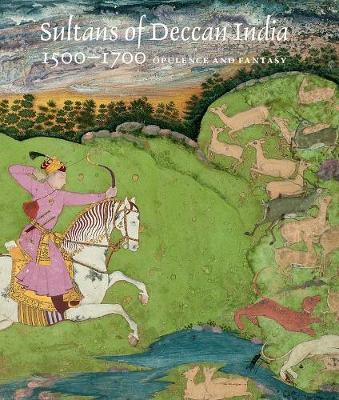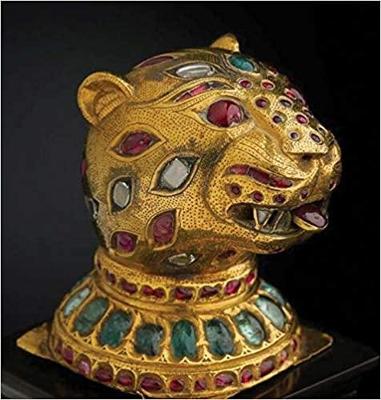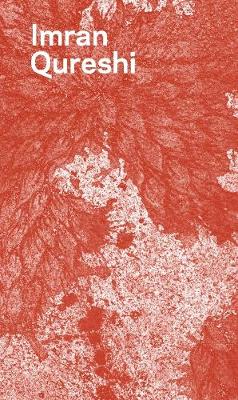Metropolitan Museum of Art
4 total works
Like Life
by Luke Syson, Sheena Wagstaff, Emerson Bowyer, Brinda Kumar, Schwartz Hillel, and Barti Kher
Published 3 April 2018
Explores how artists from the European Renaissance to the global present have used sculpture and color to evoke the presence of the living body
Since the earliest myths of the sculptor Pygmalion bringing a statue to life through desire, artists have explored the boundaries between sculpture and the physical materiality of the body. This groundbreaking volume examines key sculptural works from 13th-century Europe to the global present, revealing new insights into the strategies artists deploy to blur the distinction between art and life. Sculpture, which has historically taken the human figure as its subject, is presented here in myriad manifestations created by artists ranging from Donatello and Degas to Picasso, Kiki Smith, and Jeff Koons. Featuring works created in traditional media such as wood and marble as well as the unexpected such as wax, metal, and blood, Like Life presents sculpture both conventional and shocking, including effigies, dolls, mannequins, automata, waxworks, and anatomical models. Containing texts by art and cultural historians as well as interviews with contemporary artists, this is a provocative exploration of three-dimensional representations of the human body.
Published by The Metropolitan Museum of Art/Distributed by Yale University Press
Since the earliest myths of the sculptor Pygmalion bringing a statue to life through desire, artists have explored the boundaries between sculpture and the physical materiality of the body. This groundbreaking volume examines key sculptural works from 13th-century Europe to the global present, revealing new insights into the strategies artists deploy to blur the distinction between art and life. Sculpture, which has historically taken the human figure as its subject, is presented here in myriad manifestations created by artists ranging from Donatello and Degas to Picasso, Kiki Smith, and Jeff Koons. Featuring works created in traditional media such as wood and marble as well as the unexpected such as wax, metal, and blood, Like Life presents sculpture both conventional and shocking, including effigies, dolls, mannequins, automata, waxworks, and anatomical models. Containing texts by art and cultural historians as well as interviews with contemporary artists, this is a provocative exploration of three-dimensional representations of the human body.
Published by The Metropolitan Museum of Art/Distributed by Yale University Press
Exhibition Schedule:
The Met Breuer
(03/21/18–07/22/18)
A survey of the stunningly beautiful visual and decorative arts created by India's Deccan kingdoms
In the 16th and 17th centuries, the Deccan plateau of south-central India was home to a series of important, highly cultured Muslim kingdoms and was a nexus of international trade. Invigorated by cultural connections to Iran, Turkey, East Africa, and Europe, Deccani art is celebrated for its unmistakable, otherworldly character: in painting, a poetic lyricism; in architecture, a somber grandeur; and in the decorative arts, lively creations in inlaid metalwork and dyed textiles. This beautifully illustrated catalogue, which includes extraordinary new site photographs and lush landscape images, along with discussions of 200 of the finest Deccani works, creates the most comprehensive examination to date of this fascinating and remote world. The text not only discusses paintings, drawings, textiles, arms, manuscripts, and other decorative arts from this rich culture, but also explores the history, architecture, literature, and music of the period. Essays by prominent international authors, supplemented by informative maps, illustrated appendices, and select primary sources, make this pioneering book a key resource on the subject.
Published by The Metropolitan Museum of Art/Distributed by Yale University Press
In the 16th and 17th centuries, the Deccan plateau of south-central India was home to a series of important, highly cultured Muslim kingdoms and was a nexus of international trade. Invigorated by cultural connections to Iran, Turkey, East Africa, and Europe, Deccani art is celebrated for its unmistakable, otherworldly character: in painting, a poetic lyricism; in architecture, a somber grandeur; and in the decorative arts, lively creations in inlaid metalwork and dyed textiles. This beautifully illustrated catalogue, which includes extraordinary new site photographs and lush landscape images, along with discussions of 200 of the finest Deccani works, creates the most comprehensive examination to date of this fascinating and remote world. The text not only discusses paintings, drawings, textiles, arms, manuscripts, and other decorative arts from this rich culture, but also explores the history, architecture, literature, and music of the period. Essays by prominent international authors, supplemented by informative maps, illustrated appendices, and select primary sources, make this pioneering book a key resource on the subject.
Published by The Metropolitan Museum of Art/Distributed by Yale University Press
Exhibition Schedule:
The Metropolitan Museum of Art
(04/14/15–07/26/15)
A stunning look at an internationally recognized collection of Indian jeweled artworks
India's rich tradition of jeweled arts has produced extravagant and opulent creations that range from ornaments for every part of the body to ceremonial court objects such as boxes, daggers, and thrones. Starting with the Mughal rulers of India (1526–1858) and continuing to the present day, this artistic practice is characterized by an abundance of costly materials such as gold, ivory, jade, and precious stones of astounding size and quality, which artists have used to create unique and valuable works.
Treasures from India presents 60 iconic works from the world-renowned Al-Thani collection, accompanied by a text that introduces readers to their significance within the history of Indian jeweled arts. Included are some of the earliest pieces created for the imperial Mughals in the 16th century, others made for Maharajahs of the 18th through 20th centuries, and later Indian-inspired works created by Cartier in the 20th century. These examples represent the range and scope of the finest expression of the jeweled arts in India, and stand among the highest expressions of Indian culture and artistry.
Published by The Metropolitan Museum of Art/Distributed by Yale University Press
India's rich tradition of jeweled arts has produced extravagant and opulent creations that range from ornaments for every part of the body to ceremonial court objects such as boxes, daggers, and thrones. Starting with the Mughal rulers of India (1526–1858) and continuing to the present day, this artistic practice is characterized by an abundance of costly materials such as gold, ivory, jade, and precious stones of astounding size and quality, which artists have used to create unique and valuable works.
Treasures from India presents 60 iconic works from the world-renowned Al-Thani collection, accompanied by a text that introduces readers to their significance within the history of Indian jeweled arts. Included are some of the earliest pieces created for the imperial Mughals in the 16th century, others made for Maharajahs of the 18th through 20th centuries, and later Indian-inspired works created by Cartier in the 20th century. These examples represent the range and scope of the finest expression of the jeweled arts in India, and stand among the highest expressions of Indian culture and artistry.
Published by The Metropolitan Museum of Art/Distributed by Yale University Press
Exhibition Schedule:
The Metropolitan Museum of Art
(10/28/14–01/25/15)
Imran Qureshi
by Ian Alteveer, Navina Najat Haidar, Imran Qureshi, and Sheena Wagstaff
Published 2 July 2013
Named the Deutsche Bank Artist of the Year for 2013, Imran Qureshi combines traditional motifs and techniques of Islamic art with contemporary reflections on the relationship between Islam and the West. His investigations into ornamentation reference both the miniature painting of the Mughal tradition, in which he was trained, and large, site-specific installations in architectural space, which address both the building itself and its historical and political meanings. In May 2013, Qureshi will create the latest rooftop installation for the Metropolitan Museum. This volume discusses the specific interplay between the artist’s vision and the particulars of the space for which the work was created. An interview with Qureshi highlights the traditions from which his work derives, as well as the political and aesthetic connotations that inform this latest creation.
Published by The Metropolitan Museum of Art/Distributed by Yale University Press
Published by The Metropolitan Museum of Art/Distributed by Yale University Press
Exhibition Schedule:
The Metropolitan Museum of Art
(05/14/13–11/03/13)



